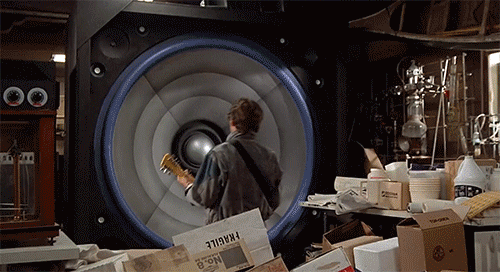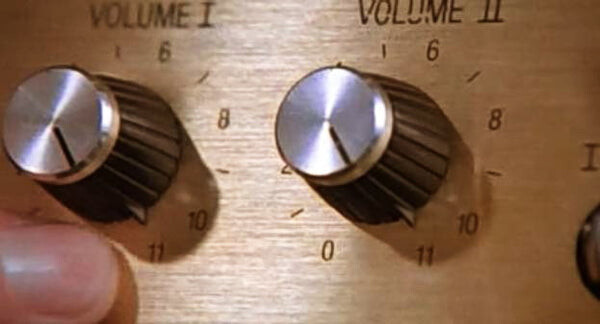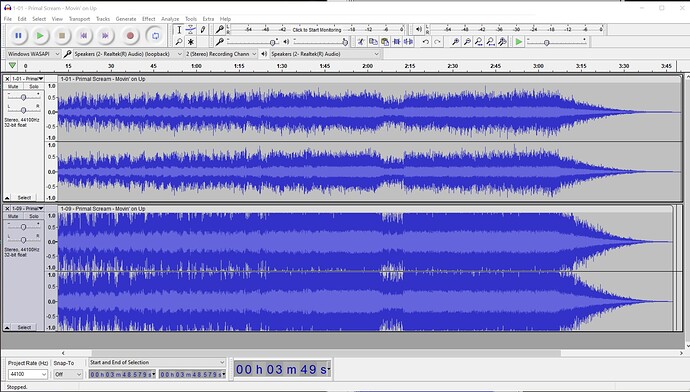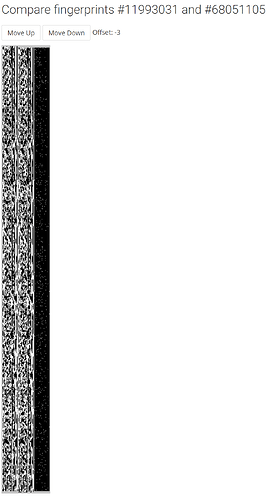That’s certainly possible, especially if there is no dirty word within the first two minutes. ![]()
More questions as this happens a lot with Two Steps From Hell.
Track "d7a7b660-f768-4314-a7ad-76b4b78aaa5f" | AcoustID contains all versions of “What’s Happening to Me” and each one corresponds to a different ID number within the track when submitted in Picard. Is this how it is supposed to work or are alternate versions (like with parts removed) meant to have a unique track number, not just a unique ID within a track of similar songs? At least 3 of the 4 are unique tracks on the albums.
It feels like they are supposed to be separate tracks, for example, these are the IDs of the track and the recording they match to:
14271616 corresponds to Recording “What’s Happening to Me” by Thomas Bergersen - MusicBrainz
14892227 corresponds to Recording “What's Happening to Me (instrumental)” by Thomas Bergersen - MusicBrainz and Recording “What's Happening to Me (no choir)” by Thomas Bergersen - MusicBrainz
20161348 corresponds to Recording “What's Happening to Me (underscore)” by Thomas Bergersen - MusicBrainz
No Idea what 44075132 corresponds to, perhaps the nameless recording redirects to the first one I listed.
When I scan the public Archangel album in Picard it always thinks the track is What’s Happening to Me (underscore) from the Power of Darkness industry release.
Edit: Also looking at the comparison of #14271616 and #14892227, If I am reading this how I think it means, I believe it even shows where the choir part is different between the 2 versions in the white parts of the 3rd bar.
This scenario would make me think that the AcoudID track is supposed to work like how “works” do and all versions are piled under one, but there are TSFH songs with small variations like the above example that do each have a unique track ID.
Edit 2: If I were to disable the AcoustID on the instrumental version (#14892227) and then did a generate again in Picard, would that then produce a new track ID or would it just find the same one again and re-enable it?
All three fingerprints have been put into the same AcoustID d7a7b660-f768-4314-a7ad-76b4b78aaa5f. That means the acoustic fingerprints are similar enough to be identified the same recording. There is nothing to do about this, these are just the edge cases that can happen with almost identical audio.
The AcoustUD d7a7b660-f768-4314-a7ad-76b4b78aaa5f is linked to both recordings Recording “What’s Happening to Me (underscore)” by Thomas Bergersen - MusicBrainz and Recording “What’s Happening to Me” by Thomas Bergersen - MusicBrainz
This either means the two recordings are the same and should be merged or there is a case again of slight deviations that are not enough to be considered a separate recording by AcoustID. To me it really looks like this might need to be merged, especially as you said the track “What’s Happening to Me (underscore)” (with the “(underscore)” ETI) is from the Archangel album.
If you do AcoustID scan in Picard and the AcoustID is linked to multiple recordings Picard falls back to metadata comparison to pick one.
If you local file has the title “What’s Happening to Me (underscore)” this matches the recording with “(underscore)” better than the one without. Also if there are multiple albums to pick from this is done by metadata comparison.
The result should be the same. Grouping similar fingerprints into AcoustIDs is completely algorithmic.
One trick I do is to use Audacity. I will load both tracks up in audacity and compare the audio graph. A visual compare. And then play the tracks together, using the mute and solo buttons to flip between tracks.
I am listening for differences. If a difference occurs, then they are different recordings. If a different instrument comes in, or a voice, or a noticble change in the choir, then it is a different recording. If the only differences are volume (mastering) then it is the same recording.
I do this too - sure its annoying but at least you can confirm, it’s also worth it to see if there are dynamic changes (like the track has been mastered louder than the other track) - in those situations I am of the understanding we don’t discern different recordings purely on being mastered louder than the other; so you’d have two fingerprints against one recording. If I do find this situation I try and add an annotation to the recording that states fingerprint A is the original whereas fingerprint B is a louder master.
Here’s an example:
I find the details fascinating. When I saw you putting the AcoustIDs up in the annotations I nicked your idea.
https://musicbrainz.org/recording/04e60be7-3d65-4ed9-bd8c-3dab33fccff5
Some remastering can look horrific
Yeah- lets just turn all the sliders up to 11… ![]()
Still same recording, so still ends up merged into the same place. Causes a different AcoustID to pop out. But AcoustID can see through that when you do a compare
I have had some recordings kick out three distinct AcoustIDs with different looking patterns. But careful playback shows they are the same thing.

Yep the joys of the “war on loudness”
For me this often happens with very old music (i.e. stuff that is being transferred from shellac) where one recording might have one click in one place and another in another place, or more rumble or a better EQ etc.
The Jerihon trumpets were fine too.

Sorry my wording was confusing but (underscore) is only on the industry release of Power of Darkness and the one on Archangel has no ETI like the main version on the Power of Darkness album.
That being said, I completely agree now that these should be merged after comparing the tracks from both my files and on extrememusic.com, they are completely the same.
This also makes sense after looking up what an “underscore” is and it’s supposed to just be a quieter background version of a song for movies. In this case, I don’t even see a volume shift and they appear to be 100% the same to my eyes and ear and even then graph in the AcoustID is almost fully black.
14892227 is a decent amount different though as I noted in my last post as seen in the AcoustID comparison but also the waveform in Audacity and the choir missing is quite obvious audibly. It’s too bad there is no way to get this to a unique trackID since some other (no choir) ones don’t fall under the same trackID as the main.
So with this shouldn’t there be no duplicate trackIDs ever then? An example is Recording “Black Blade” by Thomas Bergersen - MusicBrainz which is tied to both Track "1521365a-1e1d-4b00-8cec-e5a9f542535b" | AcoustID and Track "a2336073-1161-4b98-b74a-90e4f38cc387" | AcoustID and that recording is the same as Recording “Black Blade” by Thomas Bergersen - MusicBrainz and Recording “Black Blade (full version)” by Thomas Bergersen & Nick Phoenix - MusicBrainz which need to be merged.
Strangely AcoustID graph comparison of 48026254 under “a2336073-1161-4b98-b74a-90e4f38cc387” to the IDs under “1521365a-1e1d-4b00-8cec-e5a9f542535b” think they are completely different. Could this be some sort of error, or perhaps someone generating an AcoustID from a heavily modified file since it only has 1 source? Would it be a safe bet to just disable it?
I do the same as well, it’s usually the best way to tell but I usually only need it on much less obvious cases…like half of TSFH’s 1000+ track library…
Not sure exactly what you mean, recording IDs or AcoustIDs. But while AcoustIDs are kind of similar in their scope to MB recordings there are differences, and hence there can be both multiple MB recordings linked to one AcoustID and multiple AcoustIDs linked to one MB recording.
The different versions of “What’s Happening To Me” resulting in the same AcoustID is an example of the former. A remaster causing a different AcoustID but still being the same recording according to MB guidelines is an example of tha latter.
If the fingerprints would be real similar they would have ended up in the same AcoustID. Otherwise it’s hard to say were this odd fingerprint a2336073-1161-4b98-b74a-90e4f38cc387 is coming from. It might be an entirely different recording. Or maybe the file it was coming from was just so heavily compressed.
Sorry still sorting the terminology in my head, what I meant was that with how you described the process then a recording, whether merged or not but as long as they are the same, should produce only 1 AcoustID but can generate multiple fingerprints within the AcoustID.
Yet, as in my example and others I have seen, some identical recordings seem to have produced more than 1 AcoustID, not just a different fingerprint. As you noted though, that could be from heavy compression of a person’s particular files when they generated an ID.
The AcoustID service groups submitted fingerprints based on similarity. There is some threshold, if the difference is more than that then the fingerprints end up in different AcoustIDs, if they are more similar they get grouped together.
So yes, it is absolutely possible that there are differences in fingerprints that produce separate AcoustIDs. The system intentionally is designed so it can detect both lossy and lossless recordings and consider them the same, even on lower bitrates. But there certainly can be differences introduced at some point that will result in a different AcoustID. E.g. maybe some user has sourced the files from some analog media, or some lossy conversion introduces too much noise etc.
Likewise above there was some discussion about remastering causing different AcoustIDs, but for MB it would still be the same recording. AcoustID fingerprints also only consider the first 2 minutes of audio and the entire length. So if two recordings are of similar length and the first 2 minutes are identical, but afterwards they completely differ, they would still have the same AcoustID.
The fundamental difference is that AcoustID is based on some specifc acoustic similarity based on a fixed algorithm, whereas MB recordings are based on guidelines.
Hence the interaction between AcoustID and MB intentionally allows this many-to-many reltionship.
This feels like it should be more definitive to me since people like to note that the AcoustIDs being the same is enough for 2 recordings to be merged, but in the case of recordings like “What’s Happening To Me” and “What’s Happening To Me (instrumental)” that would be wrong.
Speaking of which, in the case of those 2 recordings, would disabling the AcoustID from “What’s Happening To Me (instrumental)”, because I know they are not the same recording, be considered correct or incorrect practice with AcoustIDs? Is doing that even worth the effort if someone else’s submission is going to possibly re-enable it anyway?
This definitely can be a strong indication, and in many cases it is true. But it should always be checked if there are other reasons for the recordings being different.
If there are some subtle differences like this that are easy to miss I think it is always good to add a comment to the recordings.
No shouldn’t be done, that would be wrong. With the same argument you could disable the other recordings and keep only the instrumental. It’s just the case here that AcoustID cannot distingiush between those recordings. They genuinly have all the same AcoustID.
I suspected that was the case after everything else in this thread. Thanks for all your answers, they have been a great help.
Also not really related to this thread but I had a thought and I think it would be very useful if somehow the fingerprints tab of a recording would show the AcoustID and the fingerprint ID number as well. I think that would clear up a lot of confusion and add another level of uniqueness to the identification and then the whole duplicate AcoustID thing wouldn’t be as much of an issue.
Barring limitations, I don’t know why it’s not like that already since the fingerprint ID is the more important part.
How would that be beneficial? All fingerprints of an acoustID are similar.
Displaying them in the Fingerprints tab would make the list considerably longer and more confusing.
EDIT: Thinking about improvements - I would rather like to have the number of submissions for the respective recording displayed in the fingerprints tab. It would make it easier to find out which are the most relevant acoustIDs.




